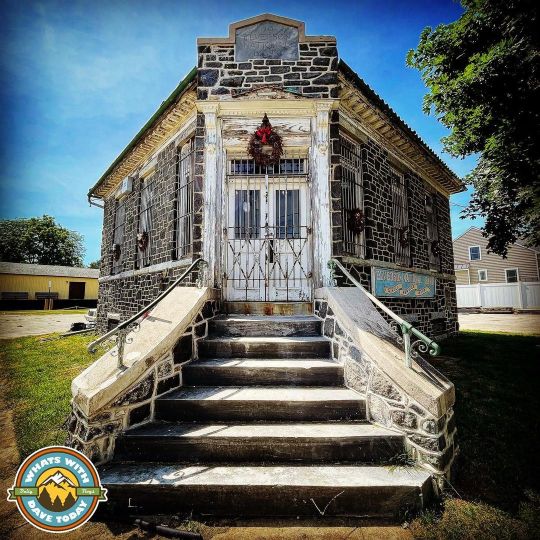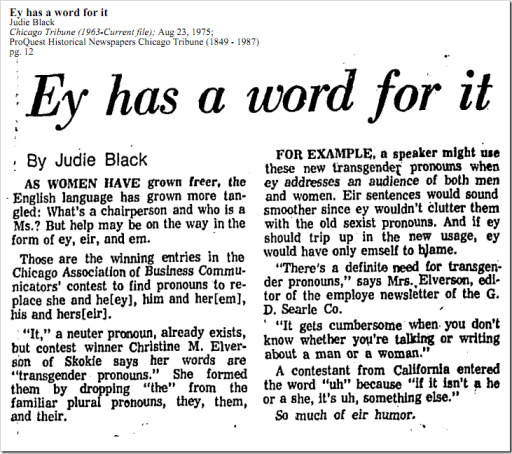#elverson
Note
spivak vs elverson
Like, who would win in a fight?
Edit: Maybe I need that Ethics Board more than I thought.
[ Take the 2023 Gender Census survey, it ends tomorrow (9th May 2023)! ]
39 notes
·
View notes
Text
Astrología en Del Aire
Si #Acuario te juzga, juzgará tu alma, no tu físico o tu apariencia.
Tarot Y Videncia:
Llámanos Ahora
🇺🇸 Estados Unidos: +1 21 37 84 79 82
Para resolver los problemas del corazón y entregarnos a la felicidad. ¡Los temas del corazón son tan complejos! Cuando el amor no ha tocado a la puerta nos sentimos ansiosos por encontrar a la paraje ideal y una vez que la tenemos nos enfrentamos al miedo de perderla. En cualquiera de los casos no hay de qué preocuparnos porque el tarot amor nos brinda la ayuda necesaria para triunfar en una relación.

0 notes
Photo

New video now up at www.YouTube.com/WhatsWithDaveToday #DailyVlog #DailyVlogs #Traveling #Travel #Traveler #Adventure #Adventures #RoadsideAmerica #RoadsideAttraction #RoadsideAttractions #Pennsylvania #Elverson #ElversonPA #Abandoned #Bank #ElversonNationalBank https://www.instagram.com/p/Cf9yFmGpcsZ/?igshid=NGJjMDIxMWI=
#dailyvlog#dailyvlogs#traveling#travel#traveler#adventure#adventures#roadsideamerica#roadsideattraction#roadsideattractions#pennsylvania#elverson#elversonpa#abandoned#bank#elversonnationalbank
0 notes
Text
oh very interesting. i just found a proposal of a new english pronoun standard from 2015.......the proposal was to differentiate animate beings from inanimate things in order to be more mindful that we share an earth with all living beings. (a third person singular animate to join the current third person singular inanimate, it/its) Invented by Robin Wall Kimmerer inspired from studying her native Anishinaabe language, and adapted to closer fit english grammar standards by Kara Huntermoon in May of this year.
To Quote Robin Wall Kimmerer, "In Anishinaabe and many other indigenous languages, it’s impossible to speak of Sugar Maple as “it.” We use the same words to address all living beings as we do our family. Because they are our family."
the proposed set was ki/kin/kinself and if you want to use it here is a little aid:
Third person singular inanimate, it/its/itself:
it is a pencil. it is on the desk. please put it away before its paint chips.
vs
Third person singular animate, ki/kin/kinself
ki is a dogwood. ki is my favorite tree. you can sit under kins branches for shade. OR What is that? Oh, that's a goose. I'm surprised to see kin all by kinself, since geese usually travel in groups.
and if you're wondering like i briefly did, the third person plural animate would probably remain "they/them" as that is the only current (standard) third person plural in english, human or inanimate (they are the painters we hired / they are my stuffed animals / they are called dandelions, etc.)
extremely cool!!!!
*** i also recognize that there are people use it/its pronouns as third person singular personal pronouns and they are animate but this post is only speaking in very broad strokes :3
#pronouns are one of my favorite subjects#these are called Kinship pronouns#(similar to ey/em being elverson and e/em being spivak)#some pronoun sets have names! its very cool :3c
12 notes
·
View notes
Text

source
8 notes
·
View notes
Text
I just discovered Spivak/Elverson pronouns and I think I'm in love??? New pronouns unlocked ig???
#ey/em/eir has such a vibe to it im ahdksvsldb#neopronouns#personal#gender stuff#nonbinary#enby#WAITWAITWAIT#would thet make me#EMby?#im in love thank you#spivak pronouns#elverson pronouns#gender#trans#they/em just hits different#gender tag
3 notes
·
View notes
Text
New York Transitional Family Room

Example of a large, enclosed, transitional family room with a dark wood floor, a media wall, gray walls, a traditional fireplace, and a wood fireplace surround.
#built in cabinets white#coffered ceiling#custom white cabinets#framed photograph smoke 16 by mark elverson#custom cabinets
0 notes
Text
playing sims earlier today and my Sim woke up angry, so ey was wandering throughout the house doing Morning Things, except he would occasionally pass through The Music Sphere and swap back over to happy, as the station is one ey likes, and honestly? yea.
#true story#you wake up and you wanna fuckin kill people but then you hear some music and it's like oh everythings fine now :)#turns off and you're back to killing#also I set the custom pronouns to elverson but it's glitched so sometimes it'll use he/him instead#I have decided to embrace this
0 notes
Text


Anyone interested in a Hobbit fixer-upper? Its roof has turned to hay, so the shire is in dire need of some sod. It has quite an oversized garage, though, doesn't it? (The 3rd bay is for an RV.) The 1988 hobbit house in Elverson, Pennsylvania has 3bds, 2ba, $450K.

This is nice, I like the curving stairs, and I'm a sucker for old knotty pine.

It actually looks like a normal house inside, but you can "shire it up." The living room is pretty big and gets lots of natural light.


Open dining area and kitchen. The carpeting has to go, though. Double sliders to the outdoors and some closets, plus knotty pine paneling complete the space.


The kitchen's dated and has the cheap laminate cabinets, but they don't looked chipped or anything. The tile floor is in good shape, too, and the appliances look new. Check.

Let me just show you my idea about how you can "shire it up." It's one of my favorite homes. This is the kitchen in Terri Windling's former home called "Weaver's Cottage," and if this isn't hobbit decor, I don't know what is. Isn't this cool?

And, this is the living room of Weaver's Cottage. Can you picture this home looking like it? If you'd like to see more, here's the link: https://www.terriwindling.com/blog/houses/page/4/

Bedroom #1 is off the the dining room.


This bath has typically retro tile. I've taken off the shower doors in one house I lived in, they're easily removed.

The bedrooms are pretty much the same. Blank canvases.

The upstairs bath has more hobbit-y cabinetry, but I don't know what happened to the one on the right.

This one has nicer tile.


It's nice up here. They working on that structure, and it looks like it may be for a wood burning stove.

There are sliders to a terrace, too. This is a nice space.

There's an RV in the garage. I don't know if it conveys or what the story is.

The house is on a 4 acre lot.


Seems to be a nice area. I don't know how this works in the winter, but there's no paved driveway to this home.
172 notes
·
View notes
Text
Epicine & Neopronouns That Predate 1999
This list is very long, with many similar pronouns! Contrary to popular belief, neopronouns aren't that new, and were never that rare. A noticable potrion of this list contains neopronouns 100 or more years old, and even more that are 50+ years old!
The vast majority pronouns in this post are sourced from Aether Lumina. Some pronouns were left off this list, so if you want to dig deeper, check the page out!
And we're not kidding--the list under the cut is LONG!
Non-Alphabetical
[name]/[name]/[name]s/[name]s/[name]self [replace [name] with person’s name, ie Alex would be Alex/Alexs]
*e, h*, h*s, h*s, h*self (splat pronouns, c.1990s) [source] [source2]
þe/þim/þir/þirs/þimself (þ is pronouned th & þe rhymes with he, 1978) [source] [source2]
3e/3im/3er/3ers/3imself (3 is pronounced z &3e sounds like zee, 1995) [source]
ðe (conjugation unknown, 1995) [source]
A-G
a/a/as/as/aself (from Middle english, 1789) [source] [source2]
ae/aer/aer/aers/aerself (1920) [origin/source]
ala/alum/ales/ales/alumself (derived from Latin and Hawai'ian, 1989) [source] [source2]
che/chim/chis/chis/chimself (1951) [source]
co/co/cos/cos/coself (1970) [source]
e/em/eir/eirs/emself
E/Em/E's/E's/E'sself (c.1977) [source]
e/em/es/es/esself or emself (1878 and 1890) [source]
E/Ir/Ir/Irs/Irself (1982) [source]
e/rim/ris/ris/risself (1977) [source]
em/em/ems/ems/emsself (1977) [source]
en/ar/es/es/esself (1974) [source]
en/en/en/ens/enself (1868) [source]
er/er/ers/ers/erself (1863) [source]
et/et/ets/ets/etself (1979) [source]
ey/em/eir/eirs/eirself (Elverson pronouns) [source]
fm/fm/fms/fms/fmself (1972) [source]
ghach (Klingon, conjugation unknown, 1992) [source]
H
ha/hem/hez/hez/hezself (1927) [source]
han/han/hans/hans/hanself (1868) [source]
hann/hann/hanns/hanns/hannself (1984) [source]
he/him/his/his/himself (generic; not actually a neopronoun)
he'er/him'er/his'er/his'er's/his'er'self (1912) [source]
heesh/heesh/heeshs/heeshs/heeshself (c.1940) [source]
heesh/herm/hiser/hisers/hermself (1978) [source]
heesh/himer/hiser/hisers/hiserself (1934) [source]
hem/hem/hes/hes/hesself (1974) [source]
heor/himor/hisor/hisor/himorself (1912) [source]
her'n/her'n/her'ns/her'ns/her'nself (1935) [source]
herm/herm/herm/herms/hermself (1985) [source]
hes/hem/hir/hirs/hirself (1935) [source]
hes/hes/hes/hes/hesself (1984) [source]
hesh/himmer/hizzer/hizzers/hizzerself (1927) [source]
hesh/hiser/himer/himer/hermself (1974) [source]
heshe/hem/hes/hes/hemself (1981) [source]
hey/heir/heir/heirs/heirself (1979) [source]
hi/hem/hes/hes/hesself (1884) [source]
hir/hirem/hires/hires/hirself (1979) [source]
h'orsh'it (1975--joke pronoun but it rocks) [source]
ho/hom/hos/hos/homself (1976--not a joke pronoun but prone to jokes) [source]
hor/hor/hors/hors/horself (1890) [source]
hse/hse/hses/hses/hseself (1945) [source]
hu/hum/hus/hus/huself (1982) [source]
hymer/hymer/hyser/hysers/hyserself (1884) [source]
I-P
id/idre/ids/ids/idself (1989) [source]
ip/ip/ips/ips/ipsself (1884) [source]
ir/im/iro/iros/iroself (1888) [source]
kai/kaim/kais/kais/kaiself (1998) [source]
kin/kin/kins/kins/kinself (1969) [source]
le/lem/les/les/lesself (borrowed from French, 1884) [source]
le/lim/lis/lis/limself (1884) [source]
na/na/nan/nans/nanself (1973) [origin/source] [source2] [source3]
ne/nem/nir/nirs/nemself
ne/nim/nis/nis/nimself (c.1850) [source]
on/on/ons/ons/onsself (1927?) [source]
one/one/ones/ones/oneself (1770) [source]
per/per/pers/pers/perself or personself (1972) [origin-ish/source] [source]
phe/per/per/pers/perself (1998) [source]
po/xe/jhe/jhes/jheself (c.1997) [source]
S-T
s/he / him/er / his/her / his/ers / him/erself (1973) [source]
se/hir/hir/hirs/hirself (1977?) [source]
se/sem/ses/ses/sesself (1990) [source]
she/herim/heris/heris/herisself (1970) [source] [source2]
she/herm/herm/herms/hermself (1976) [source]
SHe/Hir/Hir/Hirs/Hirself (1997 or earlier) [source]
shem/hem/hes/hes/hesself (1974) [source]
shem/herm/herm/herms/hermself (1973) [source]
sheorhe/herorhim/herorhis/hersorhis/herorhimself (1974) [source]
shey/shem/sheir/sheirs/sheirself or shemself (1982 & 1979) [source] [source2]
sie/hir/hir/hirs/hirself (borrowed from German, pre-2001) [source]
soloc/sebita/seniri/siculis/sulago (1998) [source]
su/su/sus/sus/suself (borrowed from Spanish, 1921) [source]
ta/ta/tas/tas/tasself (borrowed from Mandarin Chinese, 1971) [source]
tey/tem/ter/ters/temself (1971) [source]
tey/tem/term/terms/termself (1972) [source]
thir/thim/thiro/thiros/thiroselves (plural form of ir/im, 1888) [source]
thon/thon/thon/thons/thonself (allegedly 1858, definitely existed since or before 1884) [source] [source2]
U-Z
uh/uh/uhs/uhs/uhself (1975) [source]
um/um/ums/ums/umself (1877, 1879) [source]
un/un/uns/uns/unself (1868) [source]
ve/ver/vis/vis/verself (1995) [source]
ve/vim/vis/vis/visself (1974) [source]
ve/vir/vis/vis/visself (1970) [source]
xe/xem/xyr/xyrs/xemself
z/z/z/z/zself (1972) [source]
ze/zim/zee/zees/zeeself (1972) [source]
ze/hir/hir/hirs/hirself (1996) [source]
ze/zir/zir/zirs/zirself
#pronouns#neopronouns#pronoun suggestions#pronoun sets#queer history#trans history#nonbinary history#language history#queer#trans#transgender#transsexual#nonbinary#anarcha queer#pronoun list
32 notes
·
View notes
Note
Hey, I was just wondering if you have any data on themself vs themselves? All I could find of you directly investigating the question is a twitter poll from 2021
Here's the plural they tag of the blog, and it has these two posts in it, among a bunch of other waffle:
"Supplementary survey: they/them reflexives, The Sir/Ma’am Issue, and Spivak vs. Elverson" (April 2021)
"On plural inclusivity and “plural they”" (May 2021)
69 notes
·
View notes
Text
A History of Neopronouns
I am making this post after dealing with the idiocy on Reddit. Ive seen people claim neopronouns to be a joke or fake, but Im here to prove them wrong.
The first use of neopronouns is a/aself, which was used by an English writer in the 14th century, and a documentation of this was made by William H Marshall in 1789. (7 centuries)
Next, is thon/thonself pronouns, which is a contraction of the words that one. This was brough into circulation in 1858. (2 centuries)
Following is xe/xem/xyr which were brought into circulation in 1973, thanks to Don Rickter. (50 years)
Ey/em pronouns was used by Christine Elverson in 1975 which is a contraction of they/them. (50 years)
14 notes
·
View notes
Text
So I'm not really confident enough to try to do this in my first publication, but I've actually run into a grammatical issue that I, as a literary nerd, have become obsessed with actually wanting to talk to people about...
The problem is that most people are not literary nerds, and will probably feel like they're back in English class and just generally not be interested in trying to learn it... and that transphobic/enbyphobic people will be obnoxiously oppositional about it...
What I'm talking about is the singular They... which I have problems with, but not the same problems as transphobic people. My problem with it is that in written and spoken language... it gets all tied up.
NOT CONFUSING! NOT INVALID... just generally one can get tongue tied with the pluralisms of adverbs around "they/them."
In spoken language, we're used to singular adverbs like "Is" and "Was," so if we start a sentence like "How is [person] doing?" Even if we are very good about calling someone "They/them" our brain doesn't take that turn right away... so we will awkwardly go "How is... uhh..."
In a written context, and almost exclusively in a written context, it can get confusing. On paper, the reader won't know if you're referring to the non-gendered individual or the group of characters in a scene. The writer will feel obligated to using a proper noun.
There was a solution to this proposed as far back as 1890 by James Rogers... Shorthand "They" into "E." And then later it was proposed by other people over the last 100 years, eventually evolving into the proposed "Ey/Em/Eir" in 1975 (attributed to Christine M. Elverson) which traditionally is read as "A" but I personally feel it could be pronounced "E" or "A" the same way we pronounce "The" two different ways.
Of course you can circumvent all of this by just using proper nouns (or names) every time you're referring to a non-gendered or gender-obscured character, but I've found that the overuse of a character or person's proper noun can start to feel awkward as well.
Which is why as a writer... I find the use of "Ey/em" fascinating as fuck!
And not exclusively for non-binary characters.
Sometimes in literature we don't want to gender a character until we reveal who they are in the second or third act. In real life, sometimes we don't know the gender of the person we're talking about.
Sometimes in both fiction and real life we encounter gender-non-conforming non-humans. "It" also works in that case, but if I could just make the history lesson of "Ey" interesting enough to get readers to try it out... Like seriously, we already do it on accident with a slurred and awkward "How is ey doing."
And I think it's neat, I think if I could get past the opposition towards learning new rules people would be able to pick it up pretty quickly...
I'm specifically talking about "Ey/em" in this post, but seriously I think neopronouns as a linguistic concept are cool as fuck and I sincerely want to get the English-speaking world more receptive to them by using them in literature in a way that's engaging, interesting, and helps readers get a feel for how natural it starts to sound after only a couple of paragraphs.
Yes, I'm non-binary, and yes that is probably the largest most universal reason why it would be beneficial to get people more receptive towards neopronouns, but as a literary nerd I also think the concept is just cool as hell, and I wish I could convince others that it's cool as hell!
#adhd tangents#writing tangent#trans rights#lgbtq+#genderfluid#transgender#gay#writing#neopronouns#ey/em#they/them#nonbinary
2 notes
·
View notes
Text
learning of new personal neopronouns is of course fun and many have extremely interesting histories like thon and han and ae and elverson and spivak pronouns (tbh most of them ehehe) but this proposal to change our language in order to shift our view of the world is FASCINATING and BEAUTIFUL!!
12 notes
·
View notes
Text
K. Remaking this post because the OP is deactivated so I can't click on any names to add image descriptions or plain text.
trender-typhlosion (deactivated) said:
Neopronouns are not a “tumblr fad”. Gender neutral pronouns other than they/them have existed in the English language for actual centuries. They are not harmful to the trans community.
To those who are against neopronouns, you’re acting against the evolution of a language and acting against something that’s been around for far longer than you’ve been alive.
To those who use neopronouns, your pronouns are not harmful. You do not deserve to be made to feel ashamed for your pronouns.
boobless-wonder said, August 10th 2019:
Op you can’t just drop this and expect us to not ask what the old school gender neutral pronouns were!!! How on earth are all my nb friends gonna pick the dapper pronouns????
fallon-has-opinions (Deactivated? Now an empty blog) said:
I found these doing very minimal research:
Ey/Em/Eir (1975, created by Christine M. Elverson)
E/Em/Es (1890, created by James Rogers)
Per/Pers/Perself (1976, Used in a novel by Marge Piercy)
Thon/Thos/Thonself (1858, Created by Charles Crozat Converse)
Ve dates back to 1980
Xe dates back to 1973
In 1789, William Marshall confirmed the use of both“a” and “ou” as a replacement for he/she/they and even i.
Co/Coself (1970, created by Mary Orovan)
Ne (1850, appeared in print in 1884)
En (1868, mentioned by Richard Grant White)
Han/Hans/Hanself (1868)
Un/Uns/One (1868)
Se/Sis/Sim (1884)
Hesh/Hiser/Himer (1879)
Hi/Hes/Hem (1884)
Le/Lis/Lim (1884)
Hersh/Herm (1884)
Ip/Ips (1884)
Hae/Haes(Hais)/Haim (1884)
Tha/Thare/Them(Thon) (1885)
Zyhe/Zyhe’s/Zyhem (1885)
Ir/Iro/Im (1888)
De/Der/Dem (1888)
Hor/Hors/Horself (1890)
Ith/Iths (1890)
Sources for these as well as many others that I didn’t add due to the list getting too long can be found here. [[Unfortunately, the original link is broken, and no version available on the web archive :( ]]
An interesting note is that in the modern language a lot more people use neopronouns then you would expect!
Yo is a majorly African American pronoun coined in 2004 and used by Middle School students In Baltimore, Maryland.
Fae/Faer, coined in 2014, is used by 4.3% of participants in the 2019 Gender Census.
Plus a vast variety of newly coined pronouns that you will have seen commonly floating around!
Neopronouns have existed and been recorded for a long time, they are not a new concept, nor are they MOGAI or a tumblr concept. They are not modern, there have just been many modern adaptions to already existing pronouns.
As another addition from me, Ae/aer pronouns are from 1920, from the scifi/philosophy/??? book, A Voyage to Arcturus, by David Linsey.
You can download it or read it for free here on Project Gutenberg:
"https://www.gutenberg.org/ebooks/1329"
#long post#neopronouns#neopronoun history#ey/em/eir#e/em/es#per/pers/perself#thon/thos/thonself#ve#xe#co/coself#ne#en#han/hans/hanself#un/uns/one#se/sis/sim#hesh/hiser/himer#hi/hes/hem#le/lis/lim#hersh/herm#ip/ips#hae/haes/haim#Hae/hais/haim#tha/thare/them#tha/thare/thon#zyhe/zyhe's/zyhem#ir/iro/im#de/der/dem#hor/hors/horself#ith/iths#yo
6 notes
·
View notes
Note
SAW YOUR TAGS, I WROTE AN ARTICLE ON NEOPRONOUNS
records of proposed singular gender-neutral alternatives of they/them are present the late 1800s and throughout the 1900s!
Spivak (e/em/eir): 1990
Elverson (ey/em/eir): 1975
xe/xem/xyr: 1973
ae/aer/aers: a 1920 sci-fi novel!
ze/hir/hirs: 1920
ze/zir/zirs: history reaching to 1848 but this version is considered coined in the 1990s
thon/thons ("that one"): 1858, one of the first
Ooh!! Thanks Milo!
#neopronouns aren't new and saying they are it's like saying asexuality is new#it just tell me you're saying random shit without even doing a quick 5 minutes search online before
4 notes
·
View notes